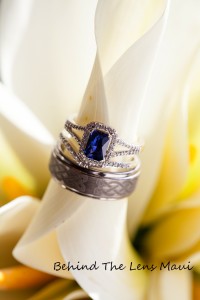11 Wedding Traditions That Finally Answer Their Origins
Have you ever been to a wedding and start to wonder to yourself, when and where did that part come from? How did that become a wedding tradition? We have all done it. Well here are 11 wedding traditions that may show the who, what, where, why and how they became a tradition.
Although some of these traditions show how something got its name, you can always include the actual acts into your ceremony to bring a part of history into your wedding, such as “tying the knot.” If you do, let your wedding photographer know up front of your intentions so that they will be sure to include it into your photos.
1. You cannot see the dress before the wedding! Actually this was started because in the past, many marriages were arraigned and the bride’s family being fearful that if the groom saw their daughter before hand, he might find her unattractive and run. In today’s society, not seeing the bride from the night before or the dress at all stems back to this tradition. It also heightens the excitement of once the groom says good-bye to his bride, the next time they see each other will be at the altar.
2. The music “Here Comes The Bride,” which is also known as the “Bridal Chorus,” is played while the brides is escorted by her father or other male figure down the aisle towards the altar, has a long history and is surprising that still exists. In 1848, Richard Wagner incorporated that music into his opera, “Lohengrin.” The scene was the couple being disrobed and ready for consummation. In 1850, Franz Liszt presented the same opera in a different manner. From that, Princess Victoria used the “Bridal Chorus” as her wedding march and instead of being banned, it became the traditional wedding march.
3. The tradition of flower girls throwing flower petals down the aisle before the bride would walk to the altar meant to lead the bride down a path to a future that is sweet and plentiful.
4. Prior to the modern day bridal bouquet, brides in the early Roman period would be known to carry under their veils bunches of herbs, such as rosemary and/or garlic, which symbolized her fertility and fidelity. It was also to ward off any evils.
5. If you noticed, the groom always stands to the bride’s right side while standing at the altar. This is also his right hand, or back in the day, his sword hand. Having it free would allow him to be free to fight off a potential jealous rival.
6. “Tying the Knot” began in the days of ancient Babylonia, where it was custom to take some threads from both the bride and groom’s clothing and tie them in a knot. The knot symbolized their coming together as a couple. It is not uncommon to find throughout many cultures today they still honor the tradition of a ceremonial knot.
7. The reason engagement and wedding rings are put on the third finger of the woman’s left hand is because back in the day of ancient Egypt, Egyptians felt that the vein located in that particular hand had a direct line to the heart, therefore tying the ring and the heart’s love the most. Romans often referred this to the “Vein of Love.”

8. Although frowned upon in modern times due to endangering birds, throwing of rice after wedding ceremonies would represent fertility and prosperity for the new couple. You may find in older cultures that the bride may still carry with them, or wear, grain sheaves.
9. The garter toss began because in ancient times, guests would be known to tear off pieces of the bride’s gown, which symbolized good luck. This thought also lead to today’s tossing of the bride’s bouquet.
10. After the new couple returns to their home, the groom would carry his bride over the threshold. This was known to represent the warding off of evil spirits located at the threshold. Since she was lifted, her feet would not touch the evils on threshold. It was also known to show her reluctance to leave the home of her father; therefore the groom was taking her away to start a new home together.
11. According to some scholars, “honeymoon” is derived from Teutonic customs. This custom involves newlyweds hiding from others to drink hydromel, which is a water mixture and fermented honey, until the moon would wane, which generally lasted for 30 days.